Chapter Eight: Shakedown (Part III)
Posted on 09/16/2013 @ 6:06am
Edited on on 09/26/2013 @ 10:54am
Mission:
From the Ashes
Location: Aboard the USS Phoenix out in space
Timeline: August 2410
((Time-wise, occurring after the "Homework" and "A Chance of a Lifetime" thread/post))
After Lieutenant Stephanie Decatur's departure, the captain sent notice and a brief synopsis to his senior officers regarding the upcoming arrival of Ashlyn Scott, the Federation news service reporter scheduled to rendezvous with the USS Phoenix several weeks from now at a preselected location. He wanted his officers to not only know of her arrival, but also to be aware of the ramifications involved in having civilian eyes noting and tracking their steps as they proceeded carrying out their everyday duties aboard the ship. The Heisenberg Uncertainty Principle recognizes that the simple act of observing alters the reality being observed. This tends to manifest itself rather incontrovertibly beyond the subatomic level; even aboard a starship with an eminently trained and dedicated crew.
* * *
The days passed and preparations continued as they headed toward their first of several destinations. The captain was now prepared to inform his crew of their next challenge. From the center seat of the bridge, Syntron engaged the ship-wide comm.
"Attention crew of the USS Phoenix" the Vulcan began and then waited a moment before proceeding.
"One of the many new upgrades that we have recently implemented into this vessel include an amended version of a quantum slipstream drive... which theoretically will allow this ship the capability of exceeding this starship's maximum warp factor by an unprecedented degree. Fundamentally, a quantum slipstream drive operated by routing energy through a vessel's main deflector, which then focused a quantum field, allowing a vessel to penetrate the quantum barrier. Previously in order to maintain the slipstream, the phase variance of the quantum field had to be constantly adjusted, or the slipstream would collapse, violently throwing a ship back into normal space. We however are... experimenting with a modified approach to this problem in contrast to what was implemented back in 2374 and the years that followed; since their endeavors never managed to get the technology to work reliably."
Syntron was striving to curtail too much science and engineering information to his crew while also preparing them for precisely what they were about to attempt. It certainly was not a simple test by any means.
"Without delving into further specifics, we are now prepared to initialize our first attempt. All hands, prepare for the emerging implementation. Each department, carefully monitor any changes in specific ship conditions that occur and notify the bridge of any unexpected variations. Everyone... stay focused and aware of your duties and your surroundings throughout this procedure. Captain out."
Syntron was keenly aware of the potential consequences of any significant error. Reflecting on the initial fate that the starship Voyager had experienced activating their slipstream technology those decades ago, he had no intention of repeating any such history. To be on the safe side however, all sensor scans confirmed than there were currently no planets anywhere within their vicinity to slam this ship in to.
The captain then turned his attention toward his chief engineer.
"Commander Rogers, implement the slipstream drive when you are ready."
There was a hushed and eerie silence that followed that last statement, as the eyes of many on the bridge drifted hesitantly toward their chief engineer.
Receiving the orders, David responded curtly as he enabled a direct tie in from his bridge station to that of Lieutenant Andrews in main engineering.”
“Aye Captain, engaging quantum slipstream drive.”
Receiving the engage signal from the helm officer, Sean began the initialization sequence by disengaging the dilithium crystal articulation frame from alignment with the compressed matter stream. As this assembly rapidly withdrew, replacement was instigated with the Benamite crystal articulation frame, a mirror of its dilithium counterpart from the other side of the reaction chamber. The two-second interval subsisted in a coasting effect in the warp drive. In the same way that a probe’s warp sustainer engine took the warp bubble from its parent launcher and continued from launch, the Phoenix actually coasted for the minor time the two alignment assemblies switched placement.
Intercepting the matter stream, the benamite crystal generated the quantum energy matrix and fed it, via the power transfer conduit, directly to the main deflector. The slipstream energy burst from the deflector and spread into a pale blue, iridescent halo in front of the coasting Phoenix. This focused quantum field opened into a deeper sub-space layer, below that used by warp engines and communications systems. As the field formed, the wormhole like aperture allowed the Phoenix to penetrate the quantum barrier. Slipstream drive was enabled. David’s countdown was nearly anti climactic.
“Entering slipstream in three ….two … one ….”
Rogers, like almost everyone else on the bridge, watched the main viewer as the transition took effect. The outside view of warp passage through the star field was erased by the blue halo like energy of the quantum field, then the barrier was breached and the view screen showed a pulsing series of concentric ring shaped energy pulses sweep into view, growing and sliding past the ship’s view. Sweeping bands of indigo and purple threads interlaced with the rings, almost as if they tied the ring structures together. These also passed off the view screen as the vessel leapt forward.
Stephanie watched the screen with a mixture of equal parts intrigue, fascination, fear, and trepidation. She let out an inaudible gasp as the ship lurched forward, feeling a slight uneasiness that she passed off as just her nerves. She had reason to fear ‘experimenting’ with velocities like this on the ship she was on. She however knew that she had to maintain her poise on the bridge.
Intriguing Syntron thought as he watched the images on the viewer shift and change in reaction to their velocity transition. The stars familiar on the screen were now gone; as if the ship had entered a hiding place in space. Within a few moments though the spell was broken as his Vulcan ears began to detect an almost imperceptible vibration occurring, although he could not ascertain its origin.
As the intensity of the vibrations began to slowly increase, he turned his attention to his bridge crew. He saw no reaction from any of them. Curious, he thought as the brow above his eye began to subconsciously elevate.
From her science station Decatur read her instruments, glancing occasionally up to view the glowing halo rings that seemed to speed back past them, a reflection of the quantum field their deflector was generating. The queasiness in the pit of her stomach didn’t go away as the moments passed; instead it seemed to be getting worse. She remembered the feeling from her first host…she did not want to re-experience that kind of motion sickness.
"Lieutenant Decatur" the captained addressed his CSO. "Are you picking up any unusual readings on the ship?"
She was able to keep herself focused on her duties and as the captain spoke to her, Lieutenant Decatur shook her head and instantly regretted it. She closed her eyes for just more than a second and calmed herself, willing the dizziness to pass, “Nothing out of the ordinary, sir….other than a slight increase in the main computer core’s processors temperature as well as in the Bio-Neural Data Network due to the nanites processing at capacity, but that’s to be expected given the increased computational load to keep up with the variance.” She seemed like she wanted to add something but instead just fell silent. She did not want to embarrass herself on the bridge again.
At his engineering station on the aft of the bridge, Roger monitored the phase calculations occurring within the main computer core. Slipstream technology being relatively new, this process had to be handled by the ship’s computers, as the phase variance’s needed a rate of updating well outside the synaptic abilities of humanoids. Perhaps a pair of the Bynar species, with their implanted synaptic processor, may have been able to keep up with the variance’s presented within the quantum slipstream, but not any other humanoid.
While the computer system displayed on his panel correlated and processed the raw data from the subspace sensor read, David watched the rapid appearance and solution algorithms blur past on the screen at a linear speed too fast to follow with his eyes. To the right of this blur of information, another small display tracked the phase variance of the quantum energy field and the computer’s response corrections being fed into the main deflector’s projected slipstream field. Because the field is a one-dimensional manifestation of subspace, the linear nature of the ship’s travel was influenced only by the direction she was facing upon implementation of the slipstream field, and the time the field itself was projected. Once the time duration for the distance to be traveled expired, the main deflector would be shut down and the ship would be thrown back into regular space. Then traditional braking could be applied to slow the ship down to relativistic speed, thus enabling the use of conventional warp or impulse drive’s.
David overheard Syntron’s question to the chief science officer and looked around. With his back to him, David could not tell what the Vulcan was referring to, but decided that he could also check the engineering board in front of him and at the number two station to his right, currently manned by chief warrant officer Jesse Swift.
“Mr Swift, check the status of all power systems currently running. I will check on the communications and data networks.”
"Acknowledged Commander Rogers" the captain responded to his ChEng's swift order to the chief warrant officer, even though the statement was not direct to him.
As he awaited any information confirming his sensory reactions, Syntron stood from the center seat as he began to feel a new subtle wave of sensations passing through him. It was as if his equilibrium was somehow becoming slightly imbalanced. He surreptitiously reached and grabbed the arms of the captain's chair to secure his balance as he steadied himself in response to the peculiar physical reaction. Afterward, as he slowly gazed around the bridge, it appeared that no one noticed his momentary falter.
Staphanie Decatur had indeed seen her Captain almost stumble as he stood out of the corner of her eye. She was trying to piece the puzzle of his uncertain balance and her own nausea together when she felt a pain from her abdomen. Every joined trill knew the area just below her lungs, partially protected by the rib cage was the single most important internal area of their body for one reason: their symbiot was housed there. The pain was mild, but the fact that it was there told her instantly that her symbiot was physically affected by the field in a way she hadn’t predicted.
“Captain, something’s not right.” She said as she quickly began running scans throughout the ship and core, her orders were run through the labs on the ship, all manned by her science teams.
Acknowledging that his CSO was trying to convey sensing something unusual as well, Syntron followed up her vague statement.
"Could you explain what you are striving to express with specifics Lieutenant?"
“Something is affecting the Decatur Symbiot, sir…painfully.” Her left hand instinctively placed itself over the area of her torso the creature was inside her. “I don’t know what could be—I'm not picking up any external issues...“ she paused as she began getting readings. “Commander Rodgers can you check to make sure your board is green?”
Instantly, Elliago tapped his chair's side panel and produced a medical tricorder. He stood up and went immediately to Decatur and scanned specifically for the bionmetrics of her symbiont. As an exotherapist, he was quite familiar with them, having even done his internship on the home planet of the Lieutenant, the first non-Trill to be ever allowed to do so.
He arched a nonexistent eyebrow at the readings.
David nodded toward Decatur and turned back to face his panels, and got a notice from Lieutenant Andrews down in main engineering.
“Commander? Uh, I am reading a fluctuation in the artificial gravity generators. All decks.”
David quickly tapped a few icons on his board and glanced once at Swift’s panels as they displayed the power systems of the ship. The MSD of the Phoenix was displayed on his main screen now, and showed a network of pale yellow and green power conduit relays throughout the display. The chief warrant officer merely looked at Rogers and shrugged a comment.
“Sir, the board shows fluctuations, but they keep randomly shifting!”
David began tracing the fluctuations on his board, while Andrew’s and Swift did the same from their station’s. Finding no untoward readings, David turned to Lieutenant Decatur at her science station.
“I can find no cause for these power fluctuations within the EPS relays or the main impulse power generation system Lieutenant. What does the ODN system look like now?”
Stephanie’s hands were flying across her terminal as she speed-read the readouts and the reports from the labs regarding the internal scans and network functionality she had already put in. Her face was getting paler as the nausea was making it a struggle for her to focus on her work.
The Deltan doctor went back to, his chair, produced a hypospray and a vial specifically labelled for Trill physiology. As the CMO, he had already prepared basic stimulants and tranquilizers for every species of bridge officer on duty into his small medical replicator programming; but this looked to be more complex than simple exhaustion or an adrenaline rush. Sending the data of his tricorder to the replicator instantly produced the correct medecine at the proper dosage. Slapping the vial to the hypospray, he went back and injected her in the jugular, so that it would travel fastest to where the symbiont was connected to the host's body.
Stephanie barely noticed the doctor until the hypospray hit her neck. She looked warily at him before nodding. She instinctively knew he was attempting to help and stay out of the way at the same time. It took effort from her not to shy away from him, and she knew that she had to get past her dislike of Deltans. Besides, he had been nothing but courteous to her since she came on board as part of the crew.
She paused after a few moments, with a look of confusion and then frustration. “The networks are running at peak efficiency…” her words trailed off as a look of realization came to her face as she stood a little too quickly and almost doubled over. She steadied herself against her consol and moved as quickly as she could to the engineering station and used Commander Rodger’s shoulder for support as she viewed his console.
“Show me the fluctuation pattern in the AGS” she blurted out as if making a demand. It wasn’t that she was trying to sound that way, she was simply focused on the problem at hand and in pain, the two combined to make her lose all focus on propriety and the social skills she had worked so hard on since coming aboard.
Syntron watched and listened keenly from the center seat as his senior officers worked collaboratively in an attempt to figure out this unusual phenomenon that was occurring aboard the ship. He could see that the diminutive trill was somehow being physically affected by this experience as well.
Ignoring the weight placed on his shoulder, David complied with the science officer’s request; bringing up the display on the larger screen in front of him. The artificial gravity system comprised a series of synthetic gravity generators under the deck plating throughout the ship, roughly thirty meters apart. These fifty centimeter round generators each contained a superconducting stator of thoroniunm arkenide suspended in a hollow chamber of anicium titanide 454. Pressurized chrylon gas suspended the stator.
Power supplied from the EPS system set the stator into rotation, and once a rpm of plus one hundred twenty-five thousand, five hundred forty was reached, a graviton field was produced by the formation of a stream of gravitron’s. Much similar to how the tractor beam worked.
The schematic of the system now displayed to Rogers and Decatur showed the entire ship’s gravity generator layout, and their associated EPS feeds. Included also was the tri-phase waveguide system that controlled both the AGS and SIF fields. These wave guides were access systems for ODN relay information inputs. These correction’s enabled the sustenance of the SIF and AGS outputs. David pointed out the yellow connections within the wave guide system to Lieutenant Decatur.
“Those shouldn’t be showing that level of speed differential Lieutenant! Look! They are all running different data levels? How is that possible?”
Drawing his attention to the engineering console as Commander Rogers replied following an order she issued, the captain stated an inquiry to the trill CSO.
"Do you have a theory Lieutenant?"
Stephanie ignored the captain for a moment as she leaned forward and tapped another control on the engineering panel to pull up the structural integrity systems and viewed them for a few seconds as it too was fluctuating. She straightened up and was instantly thankful for the injection she’d received from the Doctor, her nausea was still there, but it was much milder. She raced back to her own station, and without sitting down began swiping across her panel to bring different read-outs, frantically analyzing all the data available to her as quickly as possible.
She stopped after a moment and looked over to the center chair, “Captain, the networks are out of synch.” She reported as she started attempting to correct it from her station, “The QSD is holding steady, but the network is lagging a few hundred nanoseconds to corrections on the gravity and structural integrity systems.”
"In other words... the Phoenix feels dizzy too, " simplified Elliago with a dry smile. "Sorry Captain Sir, but I have no medecine for our Big Bird. I may try beads and rattles if you like..."
He then stopped, frowning.
"However... I do not pretend to understand your nanite technology all that well, Lieutenant... but wouldn't it be possible, due to their performance-enhancing nature, that they could be used as a kind of... stimulant to boost the networks and correct the lag?"
The Vulcan captain looked seriously at the Deltan CMO.
“Interestingly, Doctor… I was just thinking of a similar…”
The ship suddenly began to physically wobble as it jarred crew members throughout the ship with a dramatic first rippling effect.
Clutching the arms of the center seat with his hands, Syntron immediately turned toward his chief engineer.
“Commander Rogers, it would seem that our small problem is somehow increasing exponentially. How much time remains until the quantum slipstream drive is automatically disengaged?”
As a Vulcan, the captain did not believe in superstitions like luck. However, he certainly preferred that the engineer’s response would indicate that the time-frame would be ending soon; given that this problem was showing an increased potential of becoming rather grave.
“Captain,” Interjected Lieutenant Decatur as she pushed herself up off of her console before the engineer could respond, “If we drop from this speed while there’s this much lag in the system the deceleration could….” She trailed off as she tied her console into the nanite system to try and modify it. “Decatur to T’mur,” she said into her console. She had the same exact idea as the Doctor, and was silently thankful that her nanites were in the ships system already, she was horrified to think about the ship’s lag without the already enhanced network speeds provided by them.
The automated voice of her Vulcan assistant nanotechnologist came through the speakers on the bridge, “Here, Lieutenant, I believe we have a problem with the networks onboard.” She reported, not knowing that the crew on the bridge had just reached the same conclusion.
“It’s a lag time in the networks,” Stephanie said, more than a little panic in her voice as she was shaken again by the ship jostling. “You’re monitoring the nanites, how much more can we get out of them?”
“They are operating at 96.4% of capacity.” The vulcan’s voice was calm as ever over the intercom even as the young ensign was literally picking herself up off the vibrating floor of her science lab. “4.6% of their combined processing power will not be enough to bring the networks up to the required speeds.”
“Then we have to go past the safety limit.” Stephanie said, looking nervously at the Chief Engineer, who was perhaps the only person on the bridge that would understand the implication of hundreds of thousands of nanoprocessors overheating in the dense ODN lines on the ship. “Commander, we need to time this perfectly….if the processors burn out before we stop…” she let her voice trail again, unable to bring herself to explain exactly how devastating it could be for the ship to come to a sudden deceleration without the inertial dampeners and structural integrity field working properly.
“Lieutenant,” The Vulcan ensigns voice came over the intercom again, “I believe we would need to push the processing speed up to at least 131.9% in order to compensate for the lag at it’s current state.”
Stephanie had concluded a similar number, and nodded almost to herself, “Captain, I’m going to set them at 140%....it’s going to get rough though.” She looked sheepishly at Commander Rodgers knowing that the ship would likely need some repairs after this.
“Shut them down,” David called out loudly!
Immediately realizing that remark would be misinterpreted, Rogers added more succinctly.
“Shut down all systems we do not need in the ODN lines. Warp and impulse drive; tactical sensors. Even environmental systems briefly. Start an immediate transfer of the nanoprocessors into the ODN lines we absolutely have to use. Increasing the flow rate and density of the nanites in just the required lines could conceivably lower their heat exposure and lessen the risk of overheating.”
As the recommendation was being verbally emphasized by the chief engineer, Syntron began to detect the effects of physical stress on the vessel being imposed throughout the ship reaching an audible level. Seconds after these dissonant rattles were heard, warning signals began emanating from the systems throughout the bridge; including a yellow alert which automatically blared out an emphasis of their increasing dire situation.
Stephanie looked over at David like he had lost his mind until he explained what he meant by shutting everything down. Then she shook her head as he continued and she kept working vigorously at her station, struggling to remain in her chair as the vibrations of the ship kept getting worse. “Shutting down non-essentials is a great idea...but I can’t move the nanites that easily, they were never designed for movement to different areas in the ODN, that’s why we had to place them physically at junctions and why it took more than a week.”
She was almost knocked out of her chair again and had to brace herself on the console in front of her, “but with everything else shut down we should be able to limit the overclocking to 120%.”
She had barely finished when T’mur’s voice came over the bridge’s speakers again. “It may be possible to utilize the vacuum of space limit the number of overloads due to heat.” She said in her ever-calm and logical manner, “It would require a significant emergency evacuation and sealing the ODN relay path against the vacuum, but it could reduce overheating risk”
David thought over T'mur's idea for a moment before responding.
"That would work only in the main deflector area. We cannot evacuate the entire ship where the gravity generators and integrity shield projectors are. Those are everywhere!"
Syntron immediately returned his attention back to the chief engineer.
“This cooling process coupled with temporarily shutting down all non-essential systems should at least buy us additional time while reducing potential damage inflicted throughout ship systems… and perhaps preserve the integrity of the ship itself.”
The captain turned quickly to the CSO manning her station.
“Lieutenant Decatur, initiate ship-wide system reduction… and disengage the audio component of the Yellow Alert.”
“Aye, Captain.” Stephanie said, her hands were moving furiously over her console. She was already busy in the process of overriding the nanites physical safety programming. They were designed that when the reached a processor temperature of 110 degrees Celsius they would shut down automatically until they cooled. The concept was that they would shut down before causing physical damage to the ship’s systems due to overheating.
She added to her task shutting down non-essential systems. The yellow alert audio silenced itself at her command, and then she began working on the tactical systems. The weapons and targeting systems powered down completely. Next were internal sensors on all areas of the ship except along the network lines. She had to keep monitoring those as long as possible.
She cut the control program of the impulse drive, avoiding a proper shutdown and the whole ship shuttered slightly as the impulse drive system literally stalled on shutdown and went cold. Shortly after that deck by deck the lighting switched to emergency only as the main ODN lines were cut from the main feed as the environmental support systems began shutting down. They would still have air and the residual environmental heat for hours, but the system controlling it was offline.
In her haste Stephanie hadn’t used the proper shutdown procedures which would mean that it would take extra time to recalibrate everything as it was restarted, but not knowing exactly how much time she had before they were to drop to a stop, she wasn’t taking risks and was shutting the systems down in record speeds.
Turning back to the chief engineer, Syntron ordered “Evacuate all targeted decks Commander Rogers as you prepare for this cooling procedure. Ensure that all personnel are evacuated and accounted for before any compartments are opened and exposed to these subspace conditions. We will not sacrifice any crew members in our haste.”
Jumping ahead on one of the desired courses of action, David ordered the evacuation of the main deflector bay. Approximately one minute passed until the last officer out contacted the bridge.
“Ensign McCauley to bridge. All deflector decks are evacuated.”
Captain Syntron then announced stoically “Begin venting the compartments Commander.”
Accepting the captain’s order, Rogers pressed the appropriate icons on his console to initiate atmospheric reclamation, then fifty seconds later, opened the main venting to the five airless compartments.
Stephanie's report came almost instantly when the compartment was vented, “Temperatures are dropping in the nanoprocessors….103 degrees....102” her report died off after that as she kept monitoring it and continued modifying the program to allow her to overclock the system.
((Opening for more responses))
Stephanie finalized her removal of the fail-safes and entered the command as she was tossed from her chair again, almost flung over her console. The movement forced her torso to slam into the edge of the console and she could hear more than feel the cracking of a bone. The shaking slowly started to get a little better as she re-planted herself in her seat and held the right side of her abdomen. “Sir…” she was almost gasping for air, after having the wind knocked out of her, “The network is catching up….” She sighed and winced at the pain in her chest and read the temperature gauge measuring the mean temperature of her nanites on the panel in front of her.
With his natural empathy, Elliago almost winced as much as the young Trill woman when her rib cracked. In the blink of an eye he was beside her again, this time with a hand to the side panel of her chair, taking out her own Personal Inertial Dampener and slapping it gently to her back to activate it. Before she could even react to his presence he had his hypospray in hand again and injected her a localized sedative. This would keep her out of the pain while the PID would maintain her completely still in her chair, nevertheless leaving her free to pursue her duties while, after a quick check of her bone structure with his tricorder, he took from his own seat an osteoregenerator and started mending her damaged rib.
" This should do until we can get you to sickbay for a complete treatment. But if you risk loosing consciousness, we will not wait for this crisis to be over. "
With his soft voice in her hear, it sounded as much an encouragement to stay focused at her job as a warning that he would not compromise when her health status worsened. A long time veteran of starship critical situations, he knew when it was better to maintain an officier at his post and when it was time to remove that officer; and in no uncertain terms, he had just told her that she was on the edge of that moment.
And in this, his authority superceded even that of the captain.
“Temperature is rising again in the processors…” The shaking was down to a rough turbulence, similar to an aircraft in a fierce thunder-storm. “105 degrees….” She paused for only a split second, “107….Chief….” she said as if giving a warning.
Thinking quickly, David contrived an idea toward aiding the cooling of the nanites by using the primary deuterium fuel supply tank. It had hard connects for fueling the tank when docked, and also had hard connects for the ODN links while docked.
Surmising an approximately plus 3 Kelvin temperature of the stored deuterium and wrapping an ODN junction connection to the input and output ends of the star base hard connects at the ODN lines at the rear of the tank, Rogers hoped to create a type of radiator in reverse.
Wrapping the ODN connector around the venting tube on top of the deuterium tank and then venting fuel, the very cold liquid state fuel would cool off the connector and the nanites contained within the ODN line.
David turned toward Lieutenant Decatur at the science station and gave her the quickest run down on this idea to gauge her reaction to the cooling ability this scheme would accomplish.
“What do you think Lieutenant? Will it help much?”
((Tag)) ((Note: Continue this scene in Shakedown Part IV))
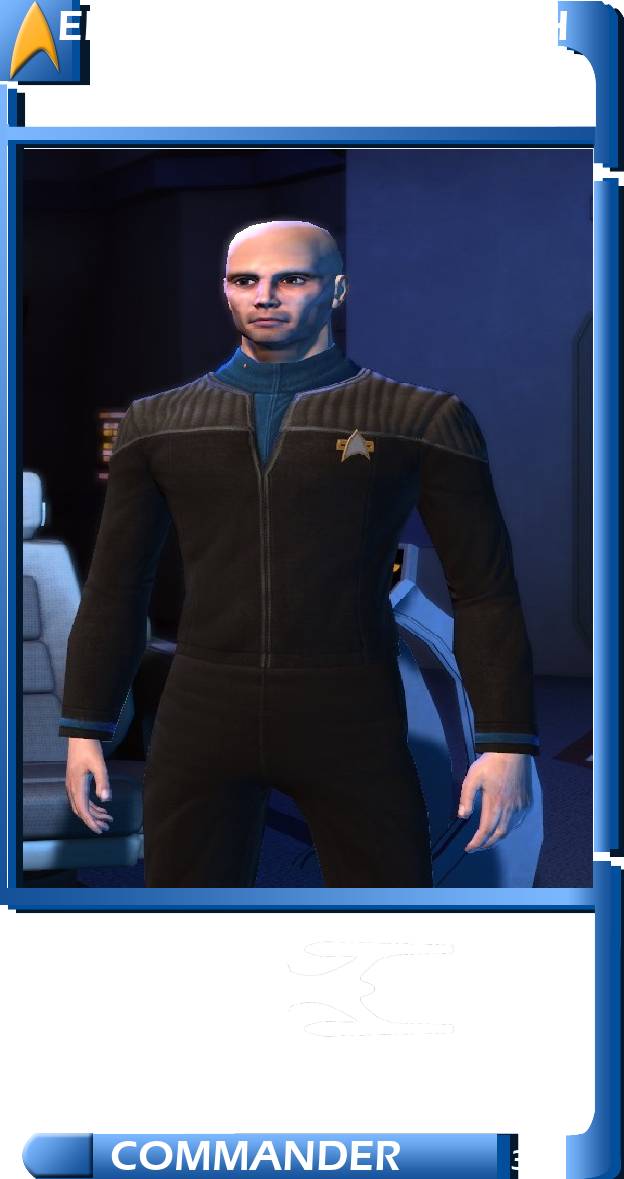

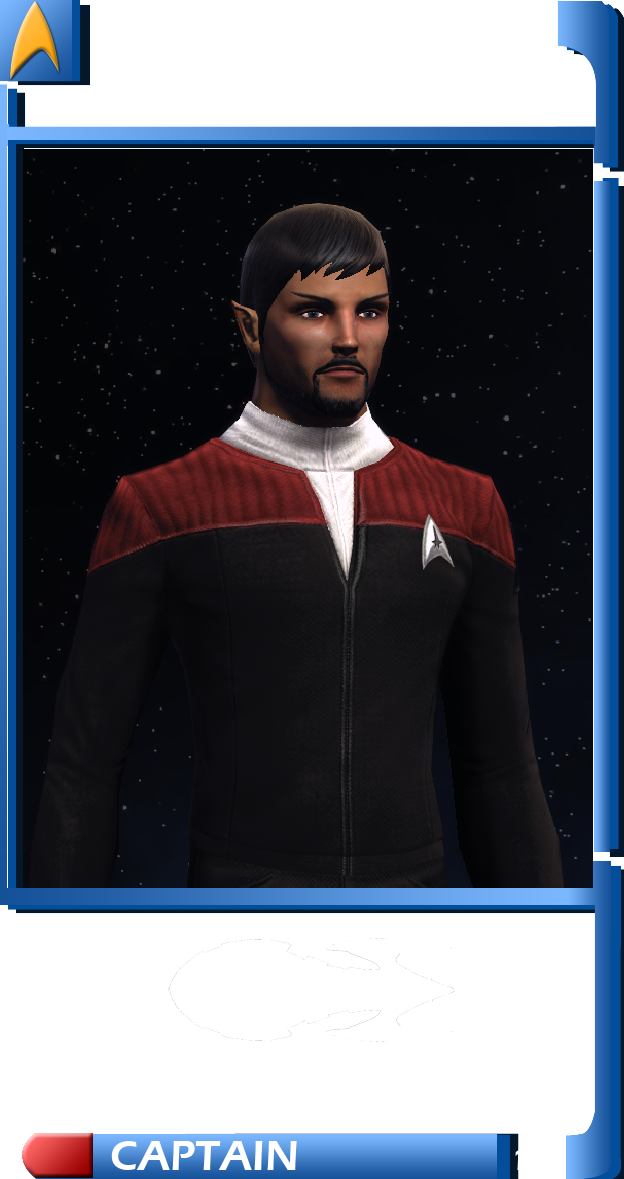

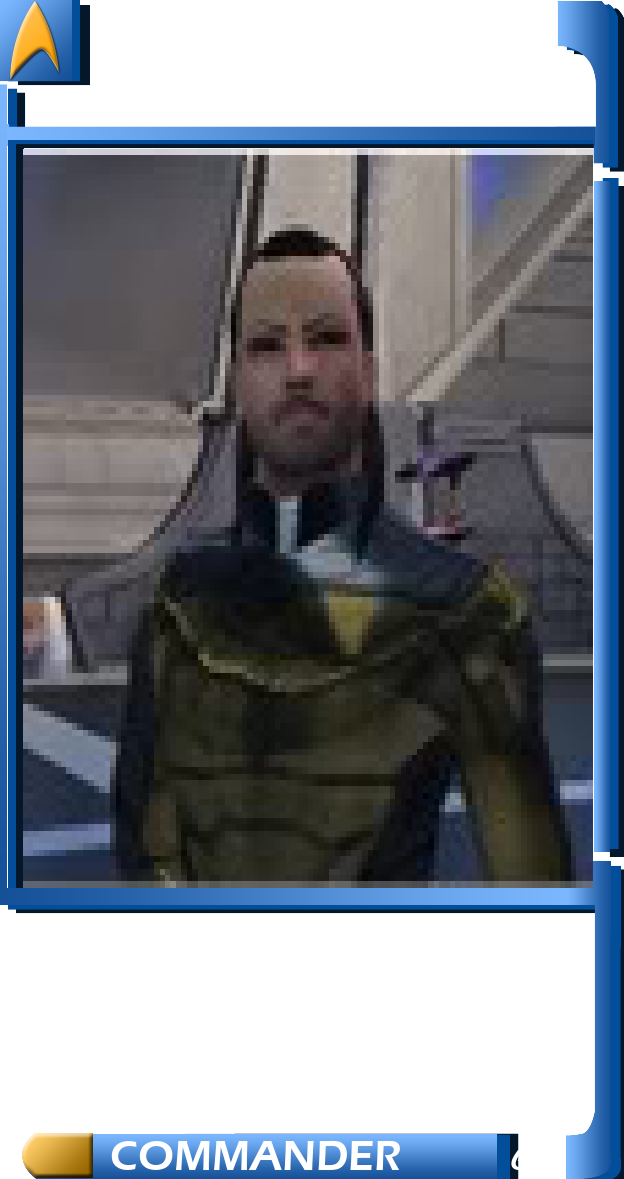
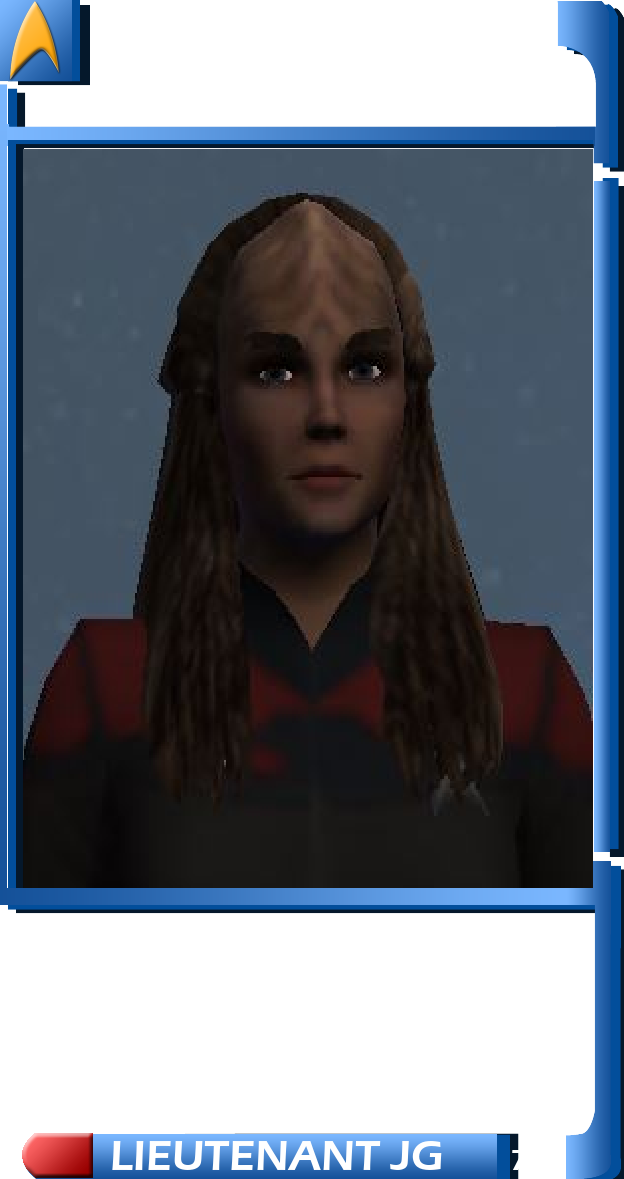

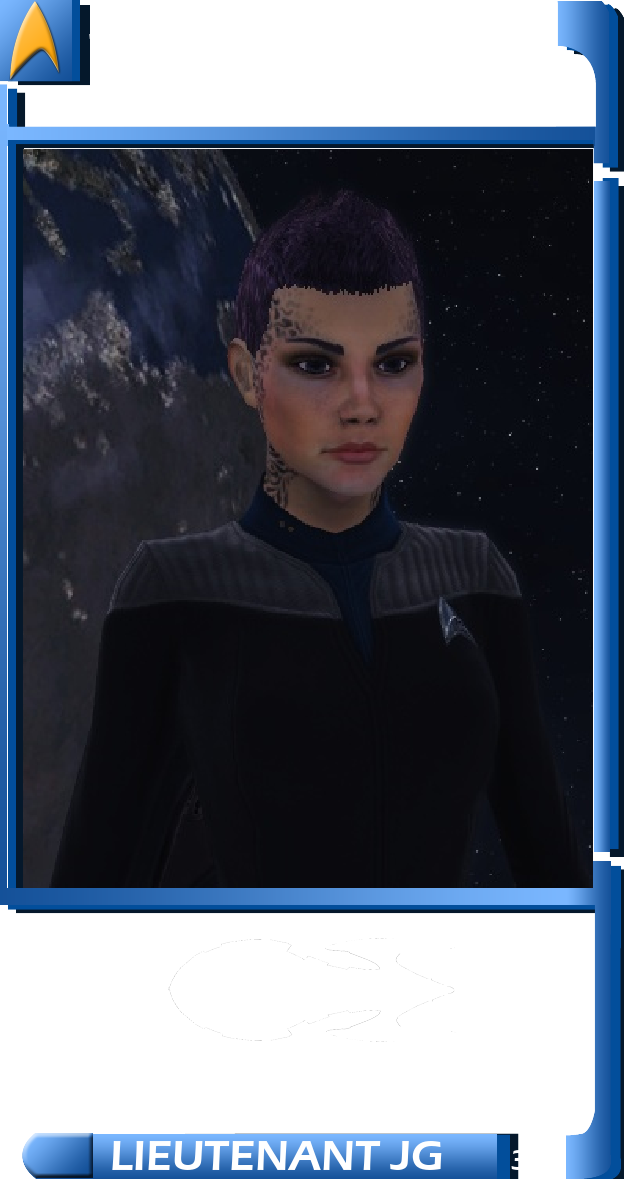
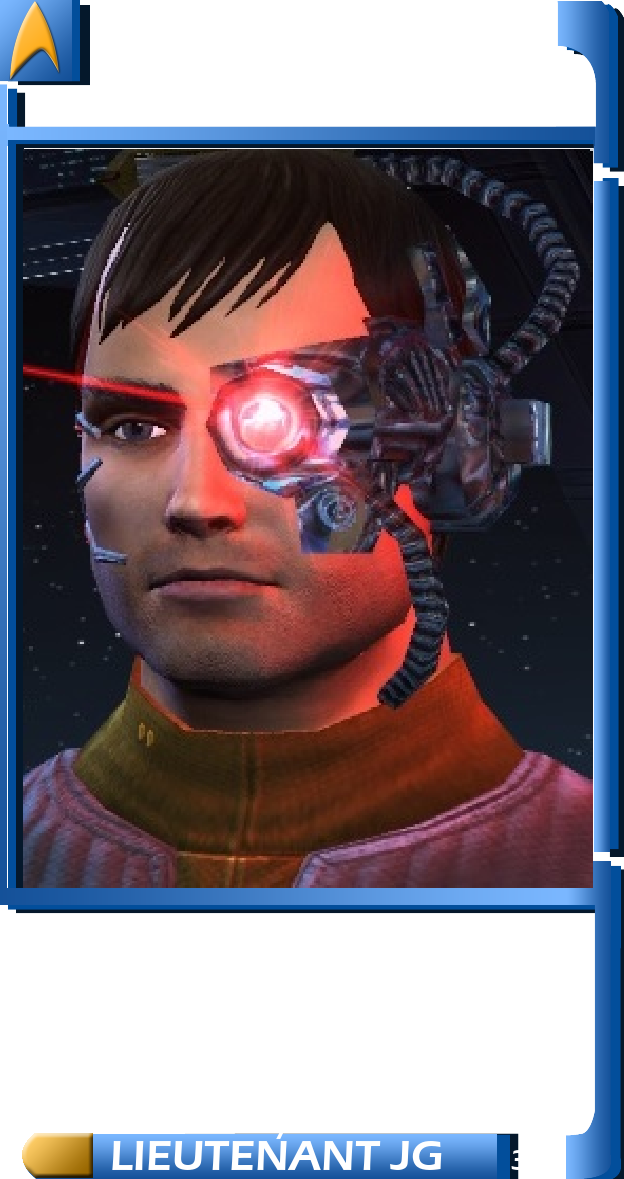
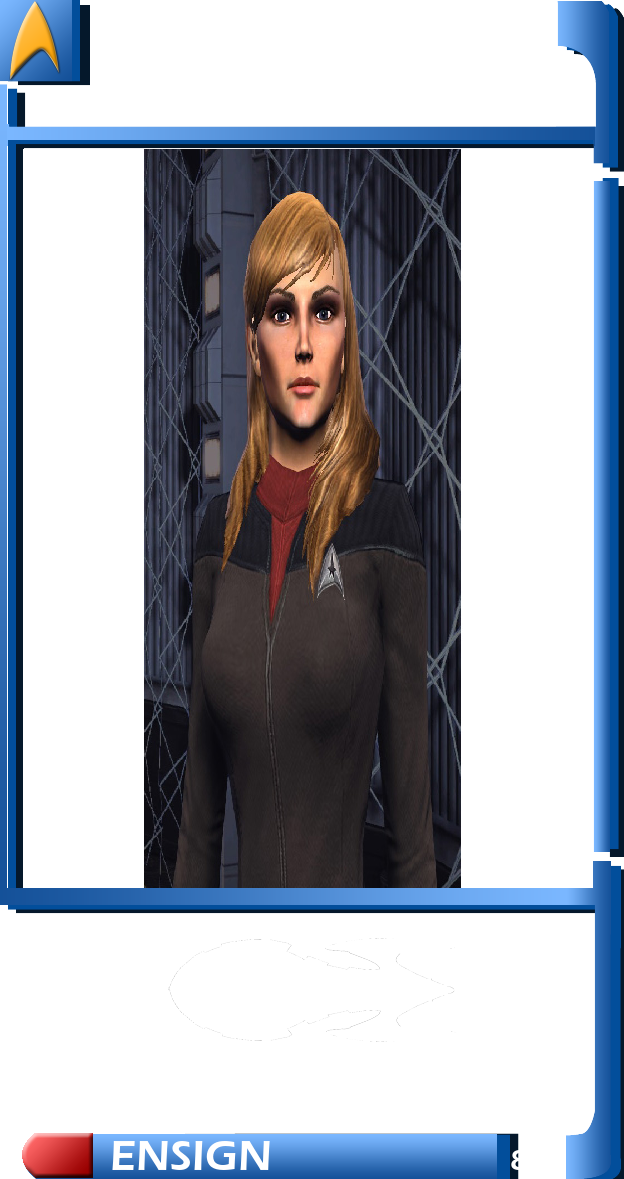


By David Rogers on 09/18/2013 @ 3:44pm
Everyone. This QSD technology is very, very vague in canon source and others. Basically, we are making it up as we go. I would ask that you all give feedback, ideas, critical thoughts and general workability suggestions. And concerns. For this to work, we only have slight info from about 3 Voyager episodes and a smattering from STO. Even Memory Alpha has little to go on.
I am also using data from Ex Astris Scientia and the Daystrom Institute Technical Library sites. Any and all feedback is welcome.
By Syntron on 09/19/2013 @ 5:59am
Excellent initiation ChEng!
Improvisation is in full gear IC as well as OOC... as expected.
I hope the PIDs are functioning!
By Kheren on 09/19/2013 @ 6:41am
Well done! Kudos to you, Sir!
Basically, as far as I understand it, QSD is directly inspired from the other Roddenberry series Andromeda and more or less from Star Wars' hyperspace. So it's core difference from transwarp drive (as on the Excelsior and now on the Horizon) is that it is a bit faster, does not allow steering (you jump, stop, reorient then jump again) totally cuts off the ship from normal space until it reemerges (can't scan or be scanned) except that it still has to be careful not going through space bodies and anomalies.
So, for a science ship like the Phoenix, it means that the Phoenix does not so much open new space (QSD is useless for charting space) as it goes directly to a study/reseach point to do in-depth work (i.e. go study the galactic barrier).
Just afew thoughts here.
By Syntron on 09/26/2013 @ 5:56am
We'll continue this scene in Shakedown: Part IV
I don't want to risk running out of space again.
Carry on!